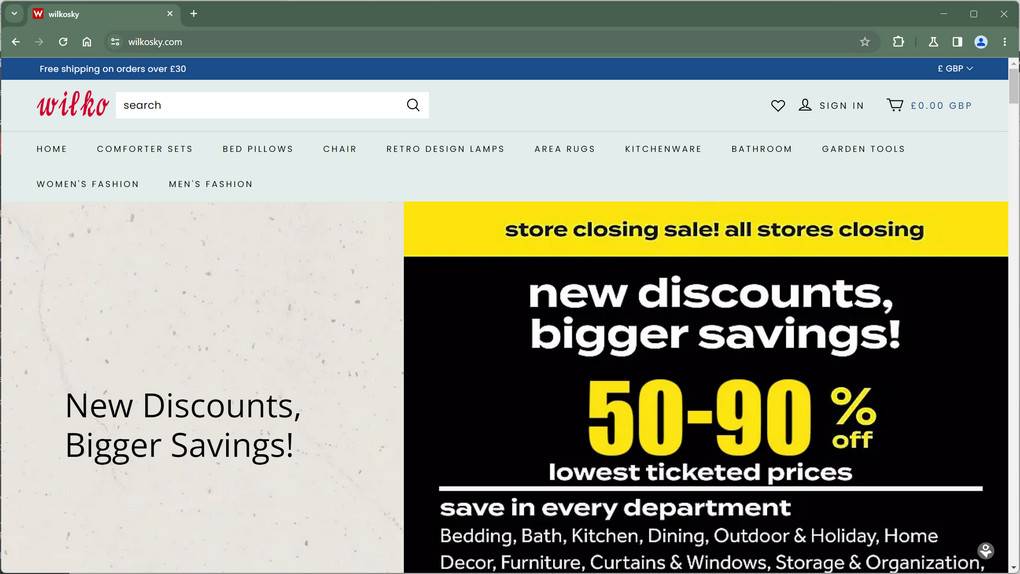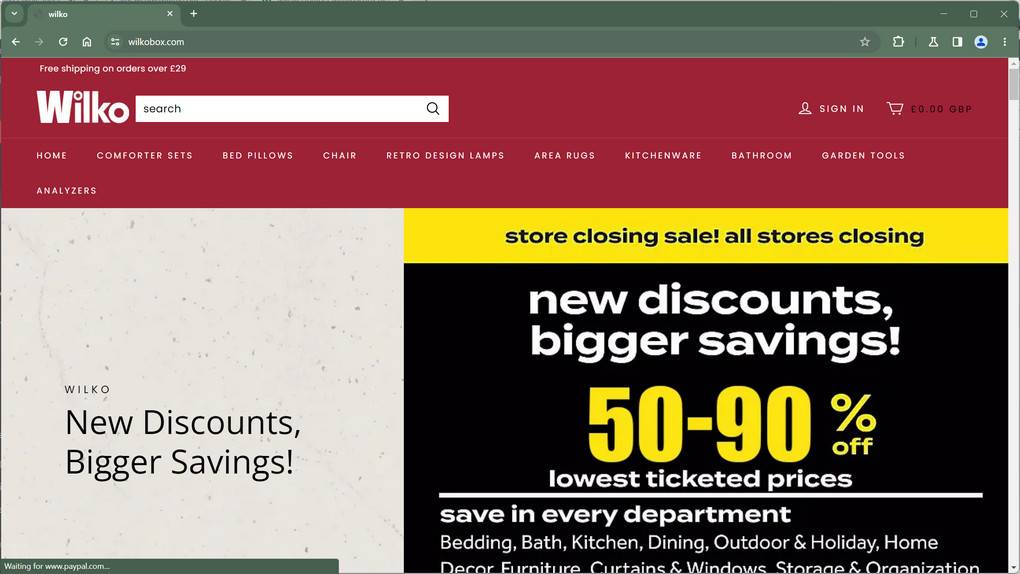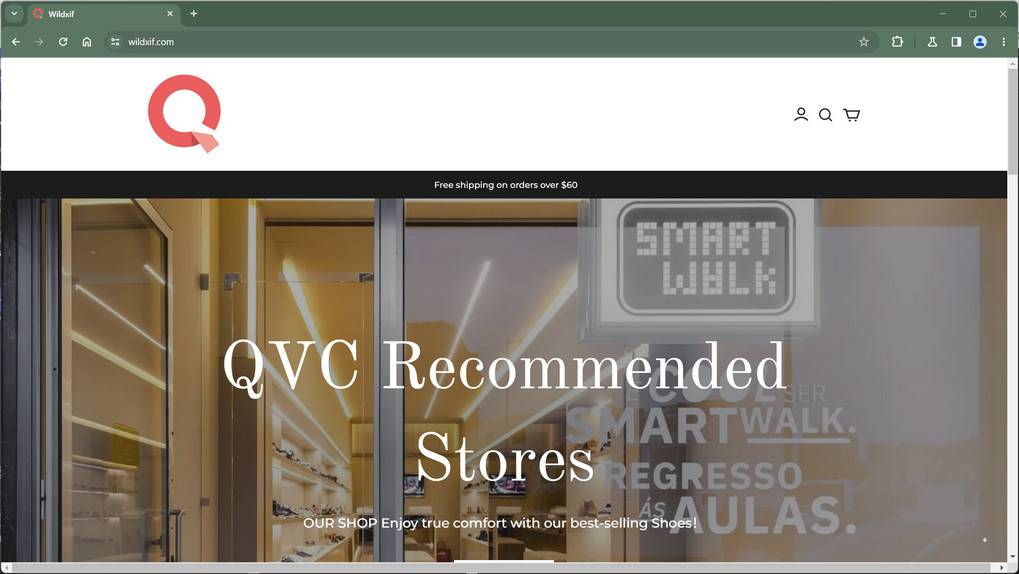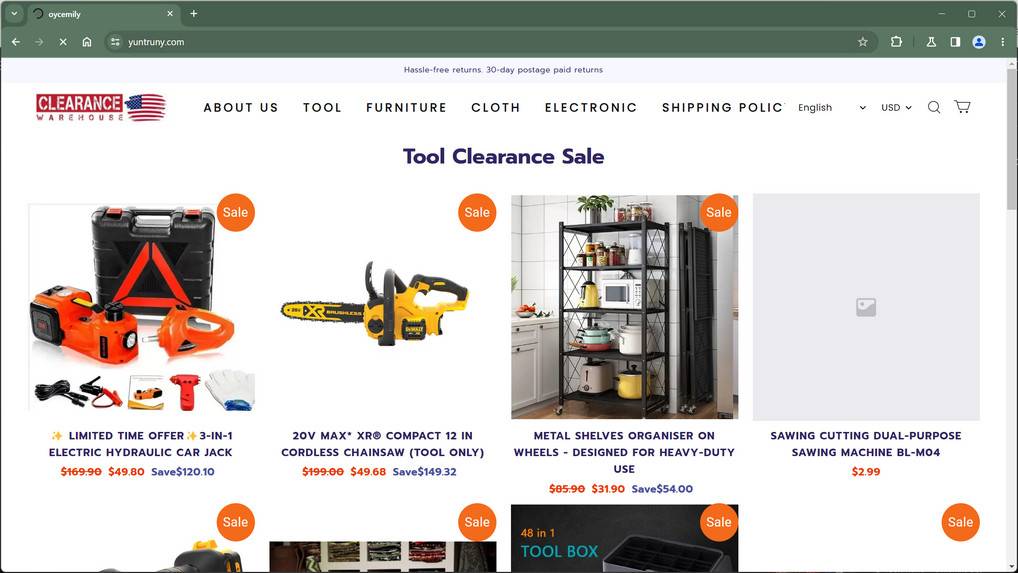If you’ve been scrolling Facebook lately, you may have seen tempting ads proclaiming eye-popping deals like “Clearance Sale: All Items 90% Off!” At first glance, the prospect of getting luxury goods and brand-name items for a tiny fraction of retail pricing seems irresistible. But behind the facade lies an elaborate scam designed to trick social media users out of their hard-earned money.
This comprehensive guide will uncover how this brazen scam works, techniques used to ensnare victims, and most importantly – how to avoid getting ripped off by these clearance sale scammers exploiting Facebook users’ desires for unbelievable deals.

“Clearance Sale: All Items 90% Off!” Facebook Scam Overview
The Facebook “Clearance Sale: All Items 90% Off!” scam employs deceptive ads and convincing fake shopping websites to lure victims into purchasing deeply discounted items that never get delivered. Scammers set up online stores offering hot ticket products like iPhones, Rolex watches, and Yeezy shoes for 90% off retail prices.
Once victims place orders, the websites vanish and no items ever arrive. Or in some cases, victims receive cheap counterfeit knockoffs instead of the advertised products. The scam banks on the believability of the false ads and FOMO urgency to snag bargain deals before critical evaluation.
Some common traits that expose these “Clearance Sale: All Items 90% Off!” Facebook offers as scams:
- Domains registered very recently specifically to execute this fraud
- No indication of a real-world business location or operations
- Limited purchase windows with countdown timers and “Going fast!” messages
- Suspiciously deep discounts like $100 E-Bikes and $50 HOKA shoes
- Out-of-business or liquidation sales pitches in ads
- Email only customer service with no phone contact
With no legitimate online presence or physical presence, these scammers essentially vanish into thin air after collecting payments. The temporary sites and ads are quickly deactivated making recovery of lost funds nearly impossible for victims.
How the “Clearance Sale: All Items 90% Off!” Scam Works
The “Clearance Sale: All Items 90% Off!” Facebook scam begins with enticing ads in your feed promoting liquidation or going out of business sales with once-in-a-lifetime discounts. They announce jaw-dropping deals like 90% or even 95% off all items to spark interest and urgency.
When you click through to the website, you’ll notice telltale signs of a scam if you look closely. The domain name was likely registered in the last few months solely for this fraudulent sale. Brand names may be misspelled like Hokka and AirJrdan.
There is no About Us page or any indication of a real physical store location for the company. You won’t find these scammers on Instagram or Twitter – their entire presence consists of temporary ads driving people to the fake clearance websites.
The website showcases unbelievable prices on coveted items like the latest E-Bike for $200 or Air Jordans for $125. Luxury dresses, power tools, and more are all available at near-giveaway prices.
Of course, the reason for this fire sale is never convincingly explained. Limited quantity countdown timers ratchet up the pressure to add items to your cart and check out before you miss out on the deals.
Once purchases are complete, customers will find it impossible to contact the company. Emails to customer service addresses go unreturned and phone numbers don’t work or connect to disconnected lines.
At best, victims eventually receive laughably poor quality counterfeits weeks later, like plastic Apple Watch replicas. More often, the orders disappear into a black hole and nothing arrives at all. By this point, the website has vanished already making it impossible to pursue refunds.
The few who paid via credit card can request a chargeback from their provider under goods not received. But the majority lose their money for good with no avenue for recompense from scammers who provided no legitimate contact information in the first place.
How to Spot This Scam
While scam sites appear convincing at first glance, several red flags can help identify their fraudulent nature:
Check for a Legitimate Domain Name and Company Details
- Fake sites often have domain names with odd spellings, extra words or use popular brand names. Search the company name online to confirm they are real.
- Check that a physical business address, working customer service phone/email are provided. Lack of real contact details indicates a shady seller.
Look for Overly Good-to-Be-True Deals
- Scam websites lure customers by advertising extravagant discounts of 50-90% off or deals well below market prices. Real businesses cannot sustain such heavy losses. If the deal looks too good to be true, it likely is.
Verify Company Reputation
- Search the website, business name and owner names online for any negative reviews or scam reports. Check with BBB, TrustPilot and complaint forums to see their reputation.
- No social media presence and zero signs of real customer activity on review sites signal likely frauds.
Analyze Site Security and Payment Options
- Ensure sites connect with SSL encryption and have guaranteed refund policies. Unsecured sites should not handle payments or sensitive data.
- Scam websites tend to only take irreversible payments like wire transfers, gift cards, cryptocurrency and avoid credit cards with stronger fraud protections.
Spot grammar errors, plagiarized policies, limited products
- Fake sites lack effort invested into proper grammar and original legal policy writing seen on established businesses.
- Very limited product selections avoiding common best-selling items categories also indicates pop-up scams.
Carefully applying these warning signs allows shoppers to expose scam retail fronts seeking solely to exploit rather than serve legitimate customer bases built on accountability and trust.
How to Spot This Scam on Social Media
In tandem with operating entirely fake e-commerce storefronts, retail scam websites heavily leverage sponsored social media ads promoting unbelievable yet highly compelling deals up to 90% off across product ranges in attempts to lure target audiences.
Highly deceptive posts explicitly screaming too-good-to-be-true price cuts frequently overrun Facebook feeds, Instagram stories and TikTok streams with aims of deceiving deal-seeking shoppers. However, certain patterns across these advertisements expose their underlying deceitful intentions.
Spotting Fraudulent Facebook Ads
Beware of too-good-to-be-true deals in Facebook ads like “90% off” or “Free Shipping” that entice people to shop. Scammers know how lucrative Facebook’s 2 billion users can be. Warning signs of a scam Facebook shopping ad:
- Extreme discounts such as “Store Closing Sale” or “Going out of Business” that seem suspicious for a newly created page. Legitimate businesses usually don’t heavily discount new inventory.
- Language and grammatical errors or inconsistencies throughout the ad or website. This signals the scammers likely quickly generated the content.
- Generic stock images of products rather than real images. Or images with watermarks that the scammer likely didn’t have rights to use.
- Very recent Page creation date shown under the Page name. Scam sites don’t last long before users report them or Facebook removes them.
If an ad or Page sets off warning bells, search for reviews of the website before purchasing. Or reverse image search any product photos to see if they were stolen from another site. Don’t support scammers taking advantage of Facebook users.
Spotting Fraudulent Instagram Ads
Scam online shopping sites try luring Instagram users with attention-grabbing captions like “Limited Time Offer!” and enticing prices such as “Today Only $39”. But is the Instagram shop legit or a scam? Signs to help determine:
- The account has very few posts and followers. Scams setup disposable accounts that get deleted once reported.
- Check user tags on the posts. If real people aren’t shown wearing or using the products, that’s a major red flag.
- Tap on the shop link in the bio. If there’s no HTTPS or SSL certificate, it’s not secure to enter payment information.
- Reviews seem fake or non-existent. Scam sites don’t have much satisfied customer proof.
- Limited or vague return policy information. Or difficult channels to request a return.
Trust your instinct if an Instagram shop seems fishy. Check independent review sites first before buying through an unknown seller advertising on Instagram. Protect your personal and payment information entering it only on secure sites after verifying legitimacy.
Catching Fake TikTok Ads
Scam TikTok shopping sites try attracting traffic using compelling videos showcasing unbelievable deals. But amazing discounts and prices may bait unsuspecting TikTok users into a scam. Be wary of:
- Links in the caption or videos bringing users to store sites no one’s heard of. Scammers setup temporary sites that won’t be around long.
- No blue checkmark verification badge on the account. This signals TikTok hasn’t authenticated the authenticity of the seller.
- Prices drastically slashed with countdown timers pressuring purchase decisions. Scare tactics rush rational judgement.
- No reviews or evidence showing real customers enjoying the products. Easy with video testimonials to fake satisfaction.
Check comment sections on TikTok scam shopping site videos for warnings from others getting duped. When prices seem too good to be true, they most likely are. Verify legitimacy before handing payment info to unknown sellers promoting on TikTok videos. Your security comes first.
What To Do If You Are A Victim
If you have fallen victim to this scam, you should take immediate action to protect yourself and your money. Here are some steps that you can take:
- Contact your bank immediately – Alert your bank to disputed charges and consider canceling your card to prevent further fraudulent purchases.
- Keep records – Save receipts, emails, screenshots, and any details related to the transaction. This provides proof of the scam.
- File a complaint – Report the fraud to the FTC and Internet Crime Complaint Center. Provide any relevant records.
- Leave online reviews – Post details of the scam on consumer review sites to warn others. However, don’t defame legitimate businesses.
- Report social media accounts – If the scam involved social media, report the accounts to get them removed.
- Reverse payments – If you paid with a credit card, request a chargeback. For wire transfers, contact the recipient bank to possibly reverse it.
- Check credit reports – Request credit reports to check for any accounts opened fraudulently using your information. Consider placing a credit freeze if needed.
- Reset account passwords – Change passwords on any online accounts that used the same login credentials entered on the scam site.
- Check your device for viruses – Run a Malwarebytes Anti-Malware Free scan to check for any malware that may have infected your device through the site.
- Learn from the situation – Study how you were deceived so you can avoid other scams in the future.
Being vigilant against shopping scams and acting quickly when scammed can help limit financial and identity theft impact. Report it to help authorities investigate and shutdown scam sites that are still active.
“Clearance Sale: All Items 90% Off!” Facebook Scam FAQ
What is the Clearance Sale 90% Off scam?
It’s a scam where fake ads and sites offer deep discounts to lure victims into buying products that never arrive.
How does the “Clearance Sale: All Items 90% Off!” scam work?
Scammers use ads to drive traffic to convincing clearance sale sites with unbelievable prices. After checkout, customers never get the items ordered.
What are some telltale signs of this scam?
Newly registered domains, no company details, countdown timers, email-only contact, unavailable phone numbers, and no social media presence.
Can I get my money back if I fell for this scam?
If you paid by credit card you can request a chargeback. File detailed complaints with agencies like the FTC and BBB.
How do these scammers advertise the fake sales?
Through enticing Facebook ads promoting liquidation and going out of business sales with extreme discounts like 90% off.
What happens after I place an order?
Most likely your items will never arrive. Some victims receive very low-quality fakes weeks later. The sites quickly disappear, preventing refunds.
Why are the prices so unbelievable?
To create urgency and trick people into buying before having time to scrutinize whether the deals could be real.
What types of products do they sell?
Hot ticket items like iPhones, Air Jordans, Gucci bags. Things with high demand that lure people in.
Can I call and speak to someone?
No, the sites only offer email contact which they don’t respond to. Any phone numbers are disconnected or invalid.
How can I avoid falling for this in the future?
Research unfamiliar sellers claiming huge discounts. Avoid wire transfers. Use credit cards with fraud protection. Identify red flags.
“Clearance Sale: All Items 90% Off!” Facebook Scam – Conclusion
The viral Clearance Sale 90% Off scam on Facebook serves as a clever deception that plays to people’s desire to save and capitalizes on limited purchase windows. But with knowledge of their deceptive tactics, these scammers can be spotted and avoided.
Learning to identify the warning signs like unbelievable prices and brand new domains is crucial. Always exercise caution when attractive deals from unfamiliar sellers appear in your social media feeds. Resist the pressure to impulse buy and take time to verify legitimacy. An ounce of prevention can save you from losing cash to clearance sale scammers.
















